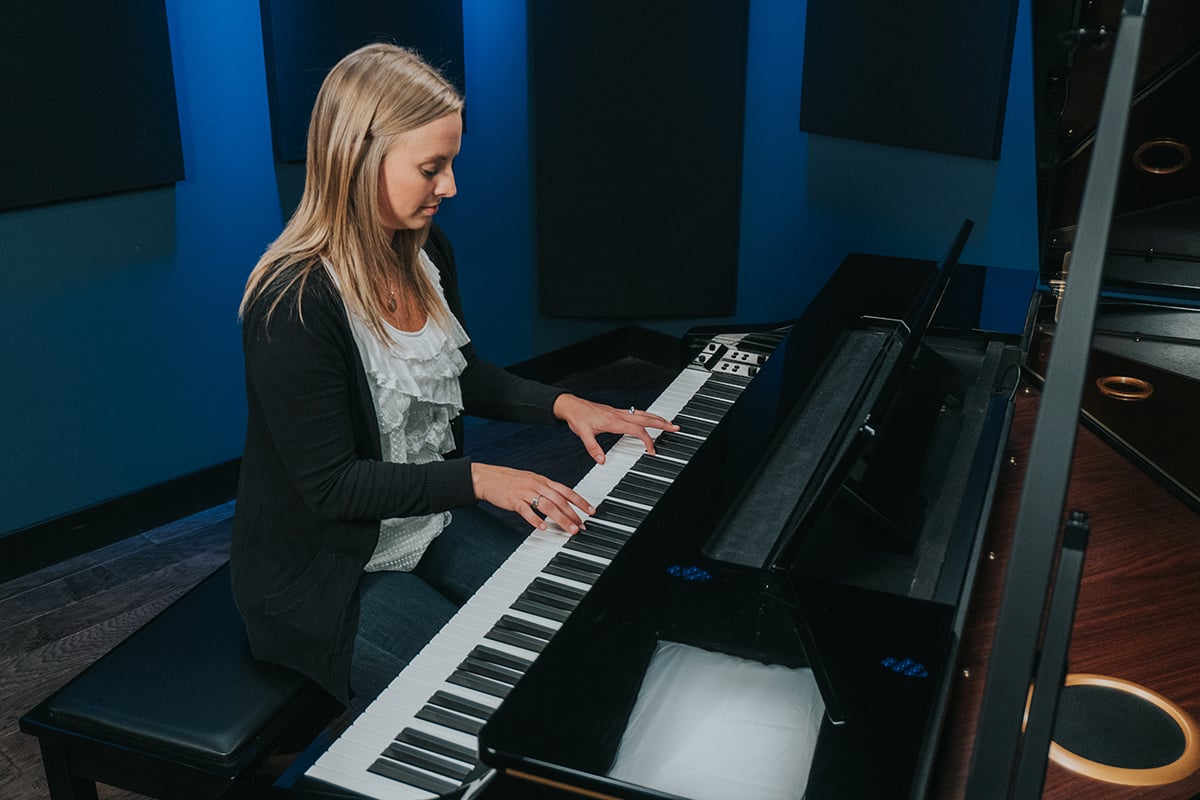This lesson is for all of you who are new to chording, OR who know a bit but want to get better at transitioning between chords.
It’ll teach you how to change chords faster, and more smoothly, so you’ll be sounding more professional in no time.
The secret is inversions. Inversions allow us to move between different chords in a progression smoothly, without bouncing our hands all over the keyboard. They do this by minimizing the distances our hands have to travel. A bonus of using inversions is that it gives our chord progressions a more colorful, sophisticated sound.
This concept can feel really overwhelming as a beginner because there are so many possible chord combinations. It takes some quick thinking to know how to move between chords when you are playing them in new shapes.
To help with this, I’m going to choose some of the most common chord transitions used in popular music, and show you how to change between them so you can practice it until it feels like second nature.
This is the first common combination. It’s moving from the root chord to the 5 chord. In the key of C, this will be moving from the C chord to the G chord, because G is the 5th note of the C scale.
We’ll start with the root position C. The notes will be C-E-G. Moving from that to a root position G chord means having to jump our whole hand up five notes. That’s a long way. Instead, we can play the G chord in a 1st inversion. This is a huge shortcut because we now only have to move our thumb down one half-step to the B, and instead of the E we’ll play the D with our 2 finger.
So the notes are now B-D-G. But it’s still a G chord. And it’s only a short transition from our beginning C chord.
This is an easy one. Our 1st inversion G chord is very close to a root position Am, which is the next chord. So we’ll just move our hand down a short distance and play the Am in root position. The notes are A-C-E.
This is the next transition where we will need to use an inversion again. We’re starting with the 6 chord (the Am) in root position. Our next chord is an F chord. Now an F chord has the notes F-A-C, and the Am has the notes A-C-E. So as you can see, we only need to move one note!! The A and the C can stay where they are.
So to make the transition smooth and fast, we only need to bump up our pinky on half-step from the E to the F, and we have an F chord in 1st inversion.

Technique is the foundation to piano playing. If technique has been holding you back from playing the songs you love, check out Piano Technique Made Easy with Cassi Falk. This course, free with your Pianote membership, will take you through all 12 major and minor keys as you master scales, arpeggios, chords, and more.
So now we know the changes, it’s time to practice. It’s easiest to practice one change at a time. So start by transitioning from the root to the 5, and use a metronome to help you speed up. Then move on to the 5-6, then the 6-4 and finally the 4-1.
Once you have this mastered in the key of C, move to other keys, so you get comfortable and build your muscle memory with these transitions.
These transitions are one example of MANY possible inversion combinations. Once you’re comfortable with these, try out some other inversions. Maybe start your first chord NOT in root position, but in an inversion, and then figure out how to move to the next chord in the shortest possible steps.
There are so many possibilities and the great thing is they will all change the way your chord progressions sound.
So try it out!
Lisa Witt has been teaching piano for more than 20 years and in that time has helped hundreds of students learn to play the songs they love. Lisa received classical piano training through the Royal Conservatory of Music, but she has since embraced popular music and playing by ear in order to accompany herself and others. Learn more about Lisa.
/marketing/pianote/promos/april/banner-bg-m.webp)
We use cookies for traffic data and advertising. Cookie Policy »
/marketing/pianote/promos/april/banner-title.webp)